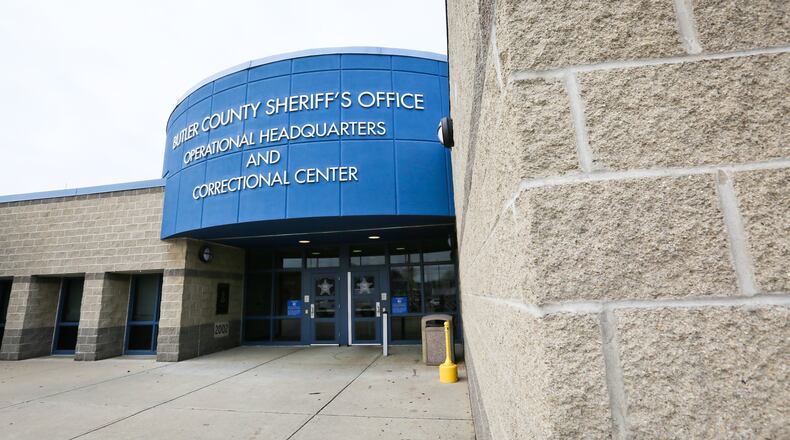The law that officially takes effect next July, mandates that judges no longer send people who commit a fifth degree felony — violent or sex offenders are not eligible — to prison, but rather sentence them to jail time or rehabilitation.
Common Pleas Court Administrator Wayne Gilkison said when the law was passed as part of the state’s biennial budget there were an estimated 197 prison inmates who under this new legislation, would have been sentenced to the Butler County Jail, as opposed to prison. Those people, along with about 250 potential probation violators, and any new eligible felony five offenders could cost the county $2.7 million to $3.8 million.
Common Pleas Court Judge Keith Spaeth, who is in charge of the felony drug court, told the Journal-News this law is bad news for the public and bad news for the county budget.
“When our administration staff started running the numbers, there’s nowhere near enough money to pay for the number of people going to prison,” Spaeth said. “If we put that same number of people in jail that we’re sending to prison, only about a third of the cost will be funded.”
Felony 5 offenders commit crimes like breaking and entering and felony non-support of dependants and some drug related offenses.
The legislators mandated that the 10 largest — Butler County ranks seventh — stop sending people to prisons next year but made it voluntary for the other 78 counties.
State Sen. Bill Coley, R- Liberty Twp., unsuccessfully lobbied to get Butler County out of the mandatory category. He said the program’s focus is to get people into community programs — not the jail — to help them become successful.
“The theory was from the Department of Corrections that their time in the custody of the Department of Corrections was too short to effect training and things like that,” Coley said. “So they were worried it was becoming crime school and it wasn’t having the positive effect we needed.”
Katrina Wilson, coordinator for Butler-Warren Reentry Coalition, said a program like this is exactly what is needed.
“Some believe introducing this type of program will permit violent offenders to ‘fall through the cracks’ and land back in our community. I don’t believe by implementing this program makes our communities less safe. In fact, I believe just the opposite,” Wilson said. “If we do not find a fix to the problem of over-committing low level, non-violent offenders, we will not have room in our jails and prisons for violent offenders who pose real threats to society.”
Major Mike Craft, with the Butler County Sheriff’s Office, said the jail is almost maximum capacity with about 1,000 inmates.
“The sheriff has a committee together looking for some alternative solutions,” Craft said. “Whether that’s electronic monitoring, whether that’s alternative treatment programs, there is a whole variety of things we’re currently looking at,” he said. “With the goal in mind of reducing the population a little bit to absorb that F-5 influx.”
Funding and space aren’t the only issues, according to Spaeth. He said the law takes the teeth out of sentencing, so judges will lose leverage in getting criminals to rehabilitate themselves.
“The only way to force people into treatment, into community corrections, is to have the leverage, the threat of prison,” the judge said. “So it’s a carrot and a stick. If you want judges to force people into drug treatment and into mental health treatment and into compliance, then you have to give them the stick to be able to persuade people to do those things.”
Butler County Administrator Charlie Young said counties aren’t just going to roll over on this issue.
“There is a significant amount of sentiment around the state from the counties to try to have this program reversed,” Young said. “Or at least have the funding be sufficient for what we’re being asked to do.”
New Prison Law By the Numbers
447: Number of eligible offenders including probation violators now
$2.7 million to $3.8 million: Potential cost to house the new inmates in the jail:
$1.1 million: Money allocated by the state to offset
$557,257: Money that can be allocated for jail housing
About the Author
